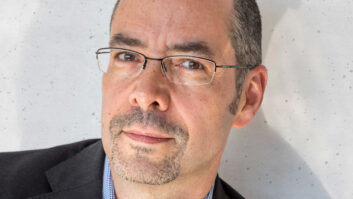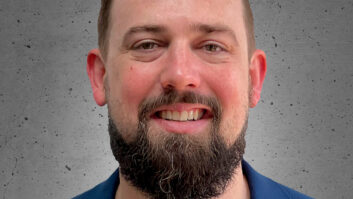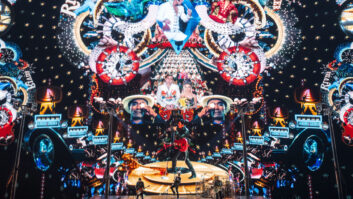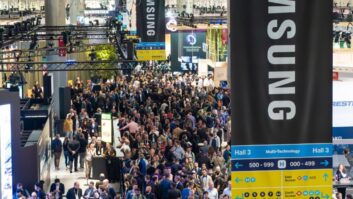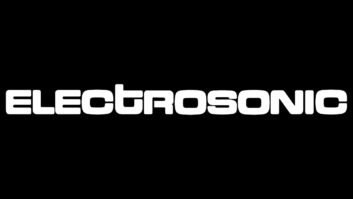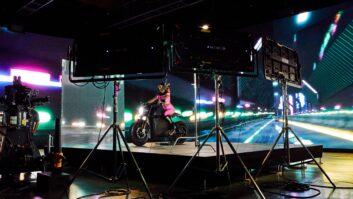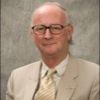
You co-founded Electrosonic in 1964. What was your background, and what was the AV industry like at that time?
There wasn’t an “AV industry” in the sense we now know it. At Oxford University I read Physics, but much more fun was helping with the lighting and sound for the dramatic society and experimental theatre club. I found my first job at Recorded Sound which did studio sound, but also things like exhibition sound and simultaneous interpreting systems. I began to get work I didn’t know how to do, but a couple of freelancers helped me out (Denis Naisbitt and Mike Ray) and after a while we decided to branch out and do it ourselves.
Lighting control was our initial product and then we became involved in the slide projection business and that became a product also – in use until the end of the century. So from the start we had a product line and an installation business because there was hardly anyone else out there doing it.
People have called you the ‘father of AV’. What do you make of that?
It’s very flattering but the only reason that might have arisen is that we were around at the right time. We didn’t by any means get everything right, but what we were able to do was adapt all the time to new technology. If we had started in 1892 we would have been serving the same market with the technology available then – such as magic lanterns.
What do you think have been the most significant developments in AV technology during Electrosonic’s lifetime?
Not necessarily what you’d expect. Fundamental has been microelectronics, microprocessors and integrated circuits. Displays like LCDs are wholly dependent on those kind of electronic developments.
Clearly the major visible developments are large flat panel displays which simply couldn’t be made using cathode ray tube principles. The manufacturing process has also evolved so that with automated systems it’s now possible to manipulate huge sheets of very thin glass.
On the projection side the Texas Instruments’ DLP chip has been a significant product primarily because it is so stable. You still have products working today that were installed the year it came out.
Access to AV has also been made greater by networked technology and room control systems. The key here is that new technologies don’t get used until the users are comfortable with them. This happened with the first computers which didn’t take off until a second generation of people familiar with, for example, BBC Micro computers came along. Similarly room control systems were all a bit of a mystery until the gadget generation, used to smartphones and games consoles, arrived and began to specify to the trade exactly what they needed..
And which technologies do you see as having the greatest potential currently?
One can make fairly obvious predictions, such that the use of networks in corporate and educational AV is a given. That CD-ROMs and DVDs will disappear with material held on servers – because the network capacity issue has been cracked with gigabit networks and new transmission methods. The use of tablets and e-readers will clearly become more important but to what extent I’m not sure: will every student in a classroom be outfitted with one or do they at some point become a hindrance to learning? Gesture-based user interfaces are also likely to impact but the technology and its applications are in the early days of being explored. The use of collaboration and conferences will increase now that people are more familiar using web video services like Skype. Predictions are a fool’s game. It is always a combination of what the technology enables and what the user wants.
Electrosonic sold its product business to Extron last March. What effect has that had on the company?
It’s been beneficial. We had reached a point where we no longer had critical mass and we were going to need new investment. The product we made for the market wasn’t being picked up by potential clients – who were also our systems integration competitors. So we faced the tricky decision of finding a sympathetic buyer who could benefit from our IP and ensure that the product would still be available to us. A major systems integrator’s ethos has to be product independent. Systems integration is always a combination of what is technically the most appropriate solution, and commercially best for the client and the integrator. We came into conflict with some of that so we needed to change direction. We were a much bigger integrator than a product business, but without the product side we would never have survived and become the business we are.
Luckily we found Extron who fitted the bill. They were looking to widen their talent pool and were very interested in the technology we’d developed for high res images over networks. The good thing from our point of view is that the product development team stayed together then, and is still together now.
Both companies trade at arm’s length, there’s no shared ownership and the relationship is a transparent one. We are just another integrator who buys from Extron.
You’re speaking at two education sessions at ISE: on ‘technology trends in electronic displays’ and at the InfoComm Future Trends Summit. Can you give us a brief taster of what the content will be?
I won’t be doing any major forecasting, I will be reviewing the current situation as I see it. For the technology trends piece I will provide a short tutorial about appropriate resolutions and contrast conditions and then I’ll home in on a number of subjects. These include the latest progress in LCDs, which is illustrated graphically by Dolby’s amazing reference monitor, to new laser phosphor displays – a technology which looks like it might fly, and an appraisal of reflective technologies. I’ll comment on the status of 3D cinema projection and its limitations, and I have a section on projection light sources that points out some misconceptions about the use of LEDs. I’ll also cover developments in electronic paper, pico projectors and OLEDs which are not yet a magic carpet you can unfold into a 10 metre display.
The InfoComm Future Trends presentation is a subset of the above but including reference to a continuum – in other words demonstrating what people thought might happen and what actually did happen. The prime example is that when I was at school there were confident predictions that we’d all have flat screens by the mid-1960s. The key take away is that we can talk about what we think might happen but previous experience tells us to be circumspect.
If you had to pick a favourite installation project, which one would it be and why?
There have been a number so this is tricky. The UK pavilion at Expo 92 Seville exploited the then latest technology, but in a way that was highly entertaining to the audience. It featured two identical theatres. Each had a stage with a backdrop of a CRT projection videowall using 32 “cubes”. The whole stage had a “scrim” or gauze in front of it on which other images were projected. At the time video projection would have been impossibly expensive, so 35mm film was used. On the stage itself a live actor performed along with the ‘Android Sisters’ – an array of TV sets with wigs mounted on pneumatic rams. Another favourite was the 850 monitor video wall in the Telecoms Pavilion at the same Expo. For both of these I was intimately involved in the original spec.
You’ve had a long career and received many industry accolades. Do you have any goals still unfulfilled?
I continue to enjoy being involved, and I like finding out what people are doing and passing this information on. For example I went to the Shanghai Expo and developed a presentation on the cutting edge exhibition techniques I saw there. I’ve given that talk 15 times and will give it another five times in the next few weeks to clients in the theme park and museum fields. This is the kind of work that I enjoy and I feel is worthwhile because I can help pass on material that many people won’t otherwise get to see. I hope to do more of the same in future.
